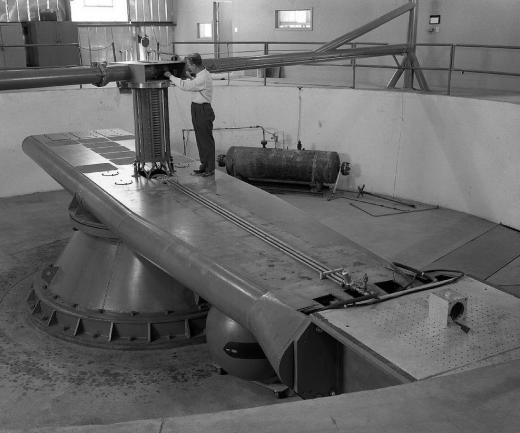Who Was the First American Astronaut?
 Michael Anissimov
Michael Anissimov
The first American astronaut, and the second person in space in general, was Alan Shepard, Jr. Like most of the early astronauts, Shepard was recruited into NASA from the Navy, where he was a test-flight pilot for high-altitude experimental craft. In the 1950s, he flew in the F3H Demon, F8U Crusader, F4D Skyray, and F11F Tiger, F5D Skylancer, logging over 8,000 hours of flying time with 3,700 hours in jet aircraft. Before he left to join NASA to become an astronaut, he was an instructor at Test Pilot School.
When the Space Race was in full swing in the late 1950s, NASA selected 110 military pilots to undergo a rigorous test regime to select out an elite group of seven for the USA's first manned spaceflights. This was part of the Mercury Project, and the elite group became known as the Mercury Seven, flying the historic series of Mercury missions. Trying to beat the Russians into space since Sputnik, the USA scheduled to have the pioneering astronaut Shepard go into space in October 1960, but the project was delayed due to the necessity of unplanned preparatory work.

On 12 April 1961, Soviet cosmonaut Yuri Gagarin became the first man in space, orbiting the Earth just once before landing again in the Soviet Union — but that was enough. Not only had the Soviets beaten the Americans by creating the first satellite, now they had launched the first human astronaut.
Only a few weeks later, on 5 May 1961, Shepard became the first American astronaut, launched into space on board the Freedom 7 capsule. Launched from Cape Canaveral, Florida, The capsule reached an altitude of 187 km (116 mi) and traveled in space for only 16 minutes before splashing down in the Gulf of Mexico. Unlike the Soviet launch, during the Freedom 7 flight, Shepard was in control of the craft the entire time.
The entire flight was played on TV and watched by millions. After successfully being recovered, Shepard was hailed as a national hero, being praised by the President and treated to parades in Washington, New York, and Los Angeles.

Though Shepard is widely considered the first astronaut, several other people were called "astronauts" in their day because of extremely high altitude flights. One of these was Wiley Post, who was the first man to fly solo around the world, and is sometimes considered the first American astronaut because of his record-setting 50,000 foot (15,240 m) altitude flight and his work in developing pressurized flight suits.
AS FEATURED ON:
AS FEATURED ON:













Discussion Comments
I am a big fan of science fiction and love shows like Star Trek, as crazy as they sometimes are. It makes me wonder, compared to what Shepard and other have done so far, what else an American astronaut might someday be able to do.
Strange, I don't think I have ever learned anything about Alan Shepard. While many people know about Buzz Aldrin and John Glenn, To say nothing of Neil Armstrong, Shepard seems to have lost importance. I suppose once we accomplished more, the simple act of entering space seemed less exciting, but still, this man did something amazing.
I think Alan Shepard is an inspirational figure and I wish we had heroes like him today. He made so many kids dream of being astronauts when they grew up. Alan continued his work for another decade after he first went up in space, commanding the Apollo 14 mission in 1971. He was originally scheduled for the Apollo 13 mission, but felt he needed more training and deferred to the later mission. Fortunately for him, this resulted in him being able to walk on the moon and avoid the trauma of Apollo 13's failure.
It saddens me that NASA's budget and efforts have gone in a different direction, which leaves the public less engaged and fascinated with the wonders of space travel. I believe the end of the Space Shuttle missions is the last nail in the coffin.
Post your comments